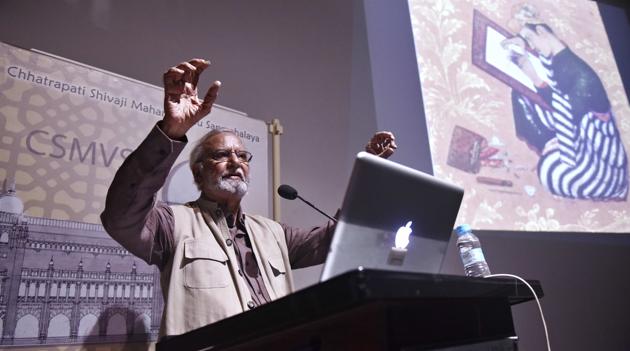Helping read ancient Indian art a tad better
Gulammohammed Sheikh’s reading of the painting ‘A ruler watching acrobats’, from the Baroda Museum, offered some clues to the access, power, position and closeness to subjects the artists would have enjoyed in pre-modern India
In the three years since it was instituted, the Jehangir Nicholson Memorial Lecture, named after the art collector who died in 2001, has had some distinguished speakers. Harvard professor Homi Bhabha talked about the complexities that arise when the artist is a refugee. American art historian James Cuno discussed identity politics in modern museums. Last year, Indian history scholar Sunil Khilnani argued for a more complex view of the Indian history in a post-fact world.

The 4th edition saw Gulammohammed Sheikh, 81, focus on a single artwork to highlight the role of the nameless artist in pre-modern India. His talk, Identity, Image, Representation, at the Chhatrapati Shivaji Maharaj Vastu Sangrahalaya (CSMVS), called on his ‘old hobby horse of reading pics and what could possibly be gauged from intense looking’. Sheikh spoke to a packed hall, explaining how knowing painters of ancient works is crucial to the study of Indian art history.
His reading of the painting ‘A ruler watching acrobats’, from the Baroda Museum, offered some clues to the access, power, position and closeness to subjects the artists would have enjoyed in pre-modern India. The placement of figures in the 18th-century work — the court at the top, performers in the centre and below — says much about the power artists wielded.
There is an equal number of figures in the court and among the performers. All classes of people are depicted as individuals rather than stereotypes, meaning the artists were free to study them. A closer look reveals possible political intrigue and definite comic absurdity. And the gloom on the emperor’s face turned away from the performance, marks the moment in history while receiving news of a death.
Art critic and curator Ranjit Hoskote, who attended the talk and viewed the work for the first time, described Sheikh as one of our most articulate artists.
“The way in which he read, interpreted and teased out the meaning was actually a form of education in how to read images that otherwise come to us without context. He made that poignant moment contemporary,” Hoskote said.
For young art students, hearing Sheikh was a rare peek into the artist’s analytical process. Design student Ananya Patel said the lecture was one of the best talks she has attended.
“It was focused, easy to follow and possible for someone to understand even without an art degree. I’ve visited Baroda museum and have seen this painting before. But now I view it differently,” she added.




